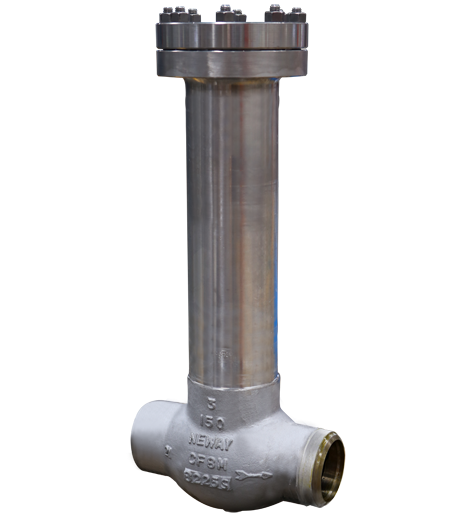Liquid hydrogen presents a distinct set of operational challenges for fluid control systems, necessitating components engineered for extreme service. Its exceptionally low temperature of -253°C requires valves with specific material and design properties. The cryogenic gate valve has emerged as a primary solution for reliable isolation in these environments, a focus area for manufacturers like Neway Valve.
Material Integrity at Cryogenic Temperatures
Standard materials become brittle and prone to failure when exposed to the extreme cold of liquid hydrogen. A cryogenic gate valve is constructed from materials such as austenitic stainless steel, which retains its toughness and mechanical strength at these temperatures. The integrity of every component, from the body to the stem, is non-negotiable for safe operation, making material science a core consideration for any liquid hydrogen valve producer.
The Critical Extended Bonnet Design
A defining feature of these valves is the extended bonnet. This design creates a distance between the valve body, which is exposed to the cryogenic fluid, and the packing and actuation mechanisms at the top. The extension stem elevates the stem seals to a warmer environment, preventing them from freezing and ensuring the valve can be operated reliably. This configuration is a standard in a well-engineered liquid hydrogen valve to maintain operational security.
Sealing and Tight Shut-Off
The wedge-and-seat mechanism of a gate valve provides a tight, metal-to-metal seal in the closed position, which is essential for isolation duties. For cryogenic service, the seats are often designed with flexible discs or spring-loaded mechanisms to account for differential thermal contraction between components as temperatures drop. This ensures the seal remains effective throughout the thermal cycle, a critical performance parameter for isolation.
The application of a cryogenic gate valve is a response to the precise physical demands of liquid hydrogen. Its suitability stems from a combination of specialized materials, a thermally managed design, and a sealing mechanism capable of withstanding extreme thermal dynamics. Companies like Neway Valve address these requirements through rigorous manufacturing controls and testing protocols to ensure valve performance and system safety in critical cryogenic applications.
